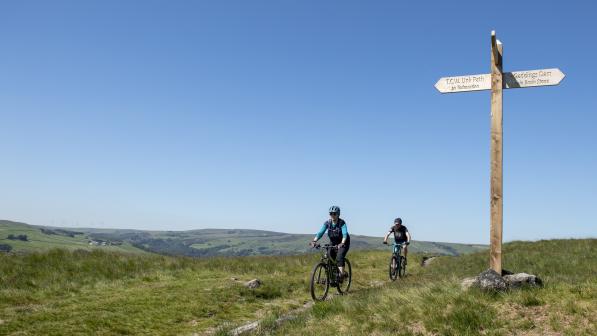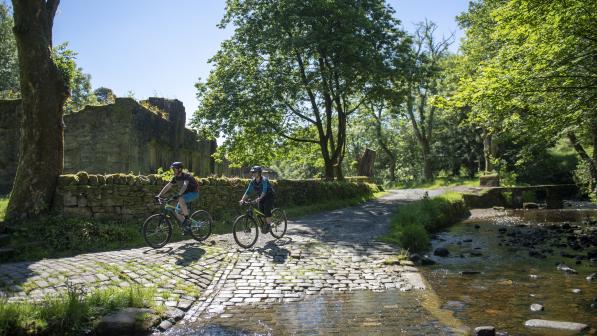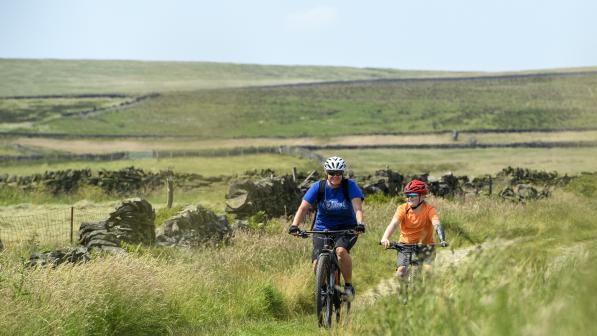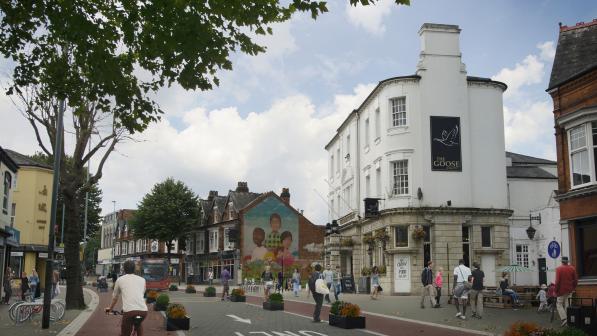How to get involved with your Local Access Forum, and why

Our guide explains how you can get involved, and why:
1. What is a Local Access Forum?
Local Highway Authorities and National Parks in England and Wales have to set up Local Access Forums (LAFs) by law under the Countryside & Rights of Way (CRoW) Act 2000.
In England, the Highways Authority are the ‘upper tier’ local authorities (eg. county councils, unitary authorities, metropolitan boroughs etc); and in Wales the local authority is also the Highways Authority.
The local authority invites and nominates local people to become members. They must ensure that the forum represents the local community with a reasonable balance of interests, i.e. rights of way users (e.g. walkers, horse riders and cyclists), landowners and occupiers, and people from relevant sectors (e.g. tourism, conservation, health etc.).
Members are not allowed to represent an organisation, but should be able to represent their interests knowledgeably.
LAFs are currently coordinated by Natural England and Natural Resources Wales.
In 2021, there were 74 active LAFs in England and 24 in Wales. Some may be called something slightly different, such as a Countryside Access Forum.
2. What does a LAF do?
LAFs advise local authorities and National Park authorities on improving public access for outdoor recreation and sustainable travel in their area. They cover, for example, the promotion and management of open access for walkers and, for all users, public rights of way and Rights of Way Improvement Plans (RoWIPs).
LAFs are statutory consultees for changes to rights of way, and should be consulted for any developments which will impact public access.
The main activities of a LAF include responding to consultations and advising the council and/or developers on improvements to public access.
3. Why should I get involved with my LAF?
Many LAFs don’t currently have a cycling representative – that's a significant proportion of countryside users with no one to speak for them.
By joining your LAF, you can have a say in discussions and influence the recommendations provided to decision makers so they will have benefits for cycling. Do you want to push for a more connected off-road network avoiding busy roads? This is one way to do it.
It’s also really important that we become names and faces rather than anonymous ‘cyclists’ or ‘mountain bikers’, and to prove that we are reasonable people willing to compromise and build relationships.
4. What’s it like being a LAF cycling representative?
Richard Jennings is the cycling representative for Buckinghamshire Local Access Forum: “It's a good opportunity to find out what the planned changes are for footpaths, bridleways and cycleways at county level, before the consultation processes are finalised. Also in terms of emerging policies it is useful to voice the opinion of cyclists among the competing demands from other users.
Being a campaigner with Cycling UK has been helpful when trying to influence topics such as the type of surfaces used, sign posting, and specific aspects of cycle infrastructure design. There is generally somebody on the campaigning forum who has expertise and experience to draw on
Richard Jennings
“Being a campaigner with Cycling UK has been helpful when trying to influence topics such as the type of surfaces used, sign posting, and specific aspects of cycle infrastructure design. There is generally somebody on the campaigning forum who has expertise and experience to draw on.
“A few examples; we raised a legal objection to the closure of a road to cyclists on the Waddesdon Estate; local MTB riders were consulted on the upgrading of the surface on the Ridgeway near Princes Risborough; the surface of a new Sustrans route was retained after questioning by other interested parties.
“Generally it has been rewarding for me personally, and I hope through [the LAF] local riders feel somewhat less alienated and ignored by the planning authorities.”
5. How do I find out if there is already a cyclist on the LAF, and if there is, how do I contact them?
Start with the council web page for the LAF –there is a useful directory of LAFs in England, otherwise do a quick search on your council’s website.
Either on the page or in the minutes of previous meetings there might be a list of current members, where you can check if there is an existing cycling rep. If there isn’t a list, there will be contact details for the forum secretary who you can email to ask.
6. How can I join my LAF?
If there is no cycling representative, contact the LAF to express an interest in becoming a member. You might be asked to give some details about the kind of experience and knowledge you have of your area of interest.
Members of the public can attend meetings as an observer, but only LAF members can participate in the discussions. There may be an opportunity after the meetings for non-members to ask questions.
7. What does being a LAF representative involve?
Most LAFs meet at least four times a year to discuss how to respond to any new consultations, developments, or issues relating to countryside access.
Meetings are usually during a weekday at the council offices (or may be online).
8. Cycling UK’s advice for representing cycling on a LAF
8.1 Local cyclists who wish to influence their LAF are advised to:
- Look up the LAF and RoWIP pages on their local authority’s website to find out about future meetings, the minutes of previous meetings, the process of becoming a formal member, and the Forum’s aspirations for the future
- Present the case for cycling at a future LAF meeting. See our briefing on Rights of Way Improvement Plans for suggestions on what to prioritise
- Although you will not be representing Cycling UK on your LAF, we would suggest that you join the Cycle Advocacy Network as a Local Representative so you can build links with other LAF members around England and Wales
8.2 When introducing a cycling-related topic at a LAF meeting:
- Research the topic thoroughly
- Discuss beforehand with the LAF’s chair
- If appropriate, liaise with the equestrian representative (who’ll be interested in bridleways)
- Liaise with other cycling LAF reps elsewhere in the country, check if others have spoken on this topic before
- Produce a summary paper to hand out at the meeting and to be attached to the minutes
- Be firm, but polite. Not all members will be sympathetic to cycling initiatives
- Try to commit the LAF to an action point for the local authority to consider
9. Cycling UK view: objectives for LAFs
Local authorities should be receptive and responsive to LAF recommendations on:
- Amendments to the definitive map of rights of way (such as upgrades to the legal status) and on processing them in a timely fashion, to the benefit of off-road cyclists
- The promotion and signing of the RoW network and other opportunities for off-road cycling
- The proper maintenance of byways, bridleways and unsurfaced unclassified roads or the removal of obstructions
- Proactive improvements to the connectivity of the RoW network, informed by the council’s Rights of Way Improvement Plan
LAFs should adopt, implement and promote Cycling UK’s key Rights of Way Improvement Plan (RoWIP) priorities – to maximise the benefits of cycling, the delivery of RoWIPs should:
- Be informed by a survey of the off-road cycling network
- Identify gaps and implement improvements
- Promote, sign and maintain routes for cyclists
10. Further resources
- Cycling UK briefing on Rights of Way Improvement Plans (RoWIPs)
- Guide to Developing new paths for cycling in the countryside
- Have a look at the missing links map to see the off-road routes that people have suggested need connecting in your area




